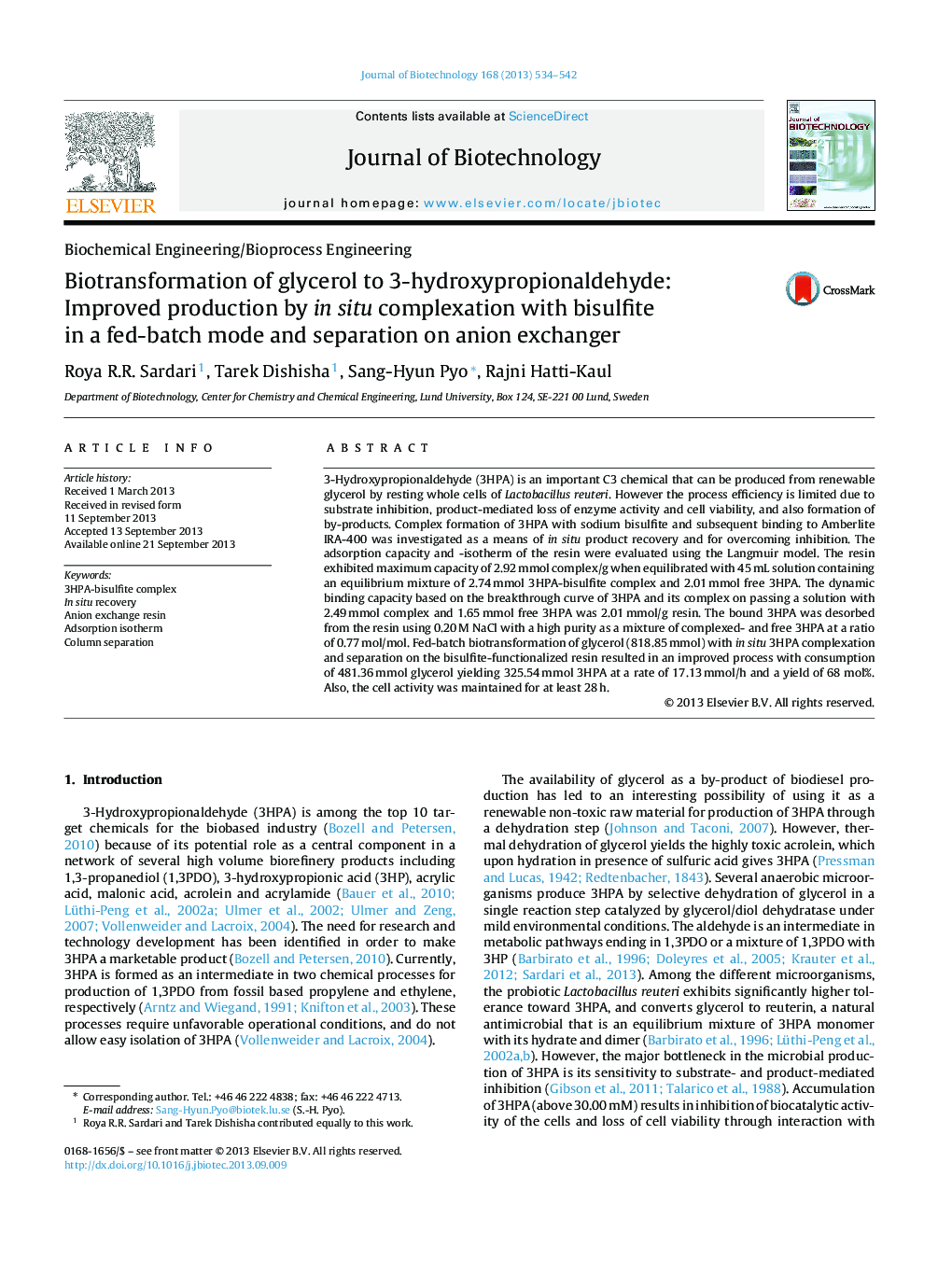| Article ID | Journal | Published Year | Pages | File Type |
|---|---|---|---|---|
| 6491711 | Journal of Biotechnology | 2013 | 9 Pages |
Abstract
3-Hydroxypropionaldehyde (3HPA) is an important C3 chemical that can be produced from renewable glycerol by resting whole cells of Lactobacillus reuteri. However the process efficiency is limited due to substrate inhibition, product-mediated loss of enzyme activity and cell viability, and also formation of by-products. Complex formation of 3HPA with sodium bisulfite and subsequent binding to Amberlite IRA-400 was investigated as a means of in situ product recovery and for overcoming inhibition. The adsorption capacity and -isotherm of the resin were evaluated using the Langmuir model. The resin exhibited maximum capacity of 2.92Â mmol complex/g when equilibrated with 45Â mL solution containing an equilibrium mixture of 2.74Â mmol 3HPA-bisulfite complex and 2.01Â mmol free 3HPA. The dynamic binding capacity based on the breakthrough curve of 3HPA and its complex on passing a solution with 2.49Â mmol complex and 1.65Â mmol free 3HPA was 2.01Â mmol/g resin. The bound 3HPA was desorbed from the resin using 0.20Â M NaCl with a high purity as a mixture of complexed- and free 3HPA at a ratio of 0.77Â mol/mol. Fed-batch biotransformation of glycerol (818.85Â mmol) with in situ 3HPA complexation and separation on the bisulfite-functionalized resin resulted in an improved process with consumption of 481.36Â mmol glycerol yielding 325.54Â mmol 3HPA at a rate of 17.13Â mmol/h and a yield of 68 mol%. Also, the cell activity was maintained for at least 28Â h.
Related Topics
Physical Sciences and Engineering
Chemical Engineering
Bioengineering
Authors
Roya R.R. Sardari, Tarek Dishisha, Sang-Hyun Pyo, Rajni Hatti-Kaul,
